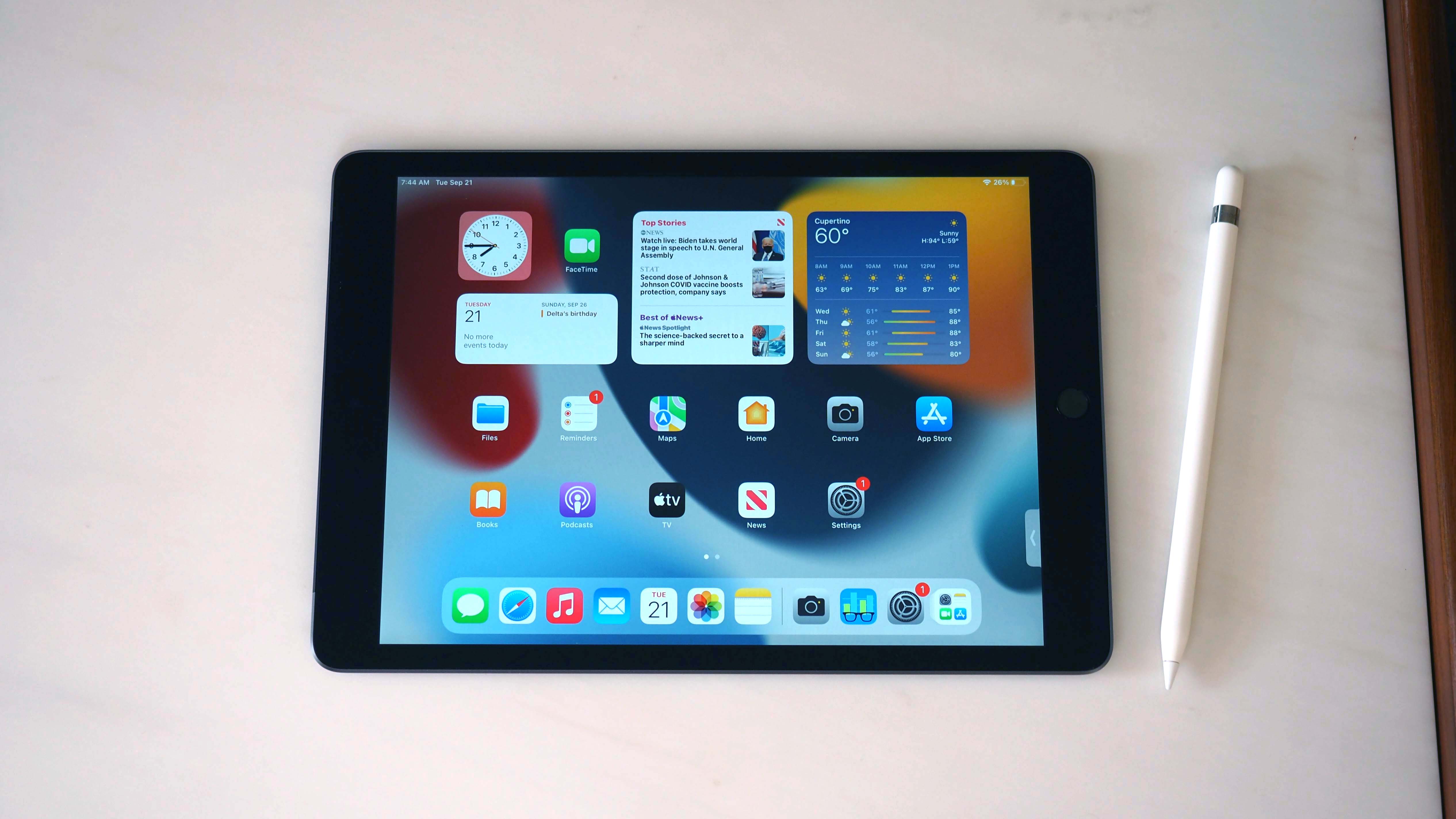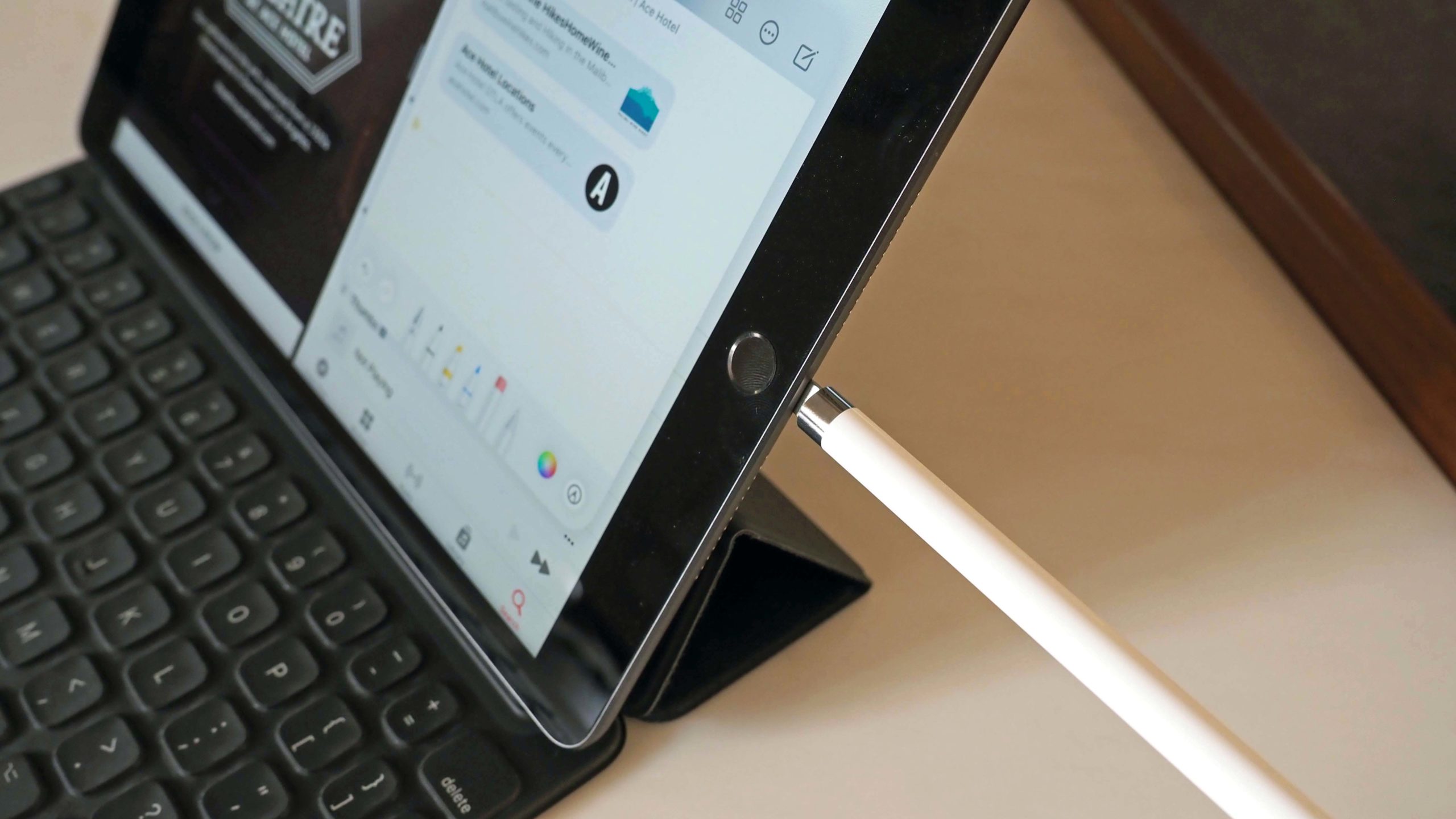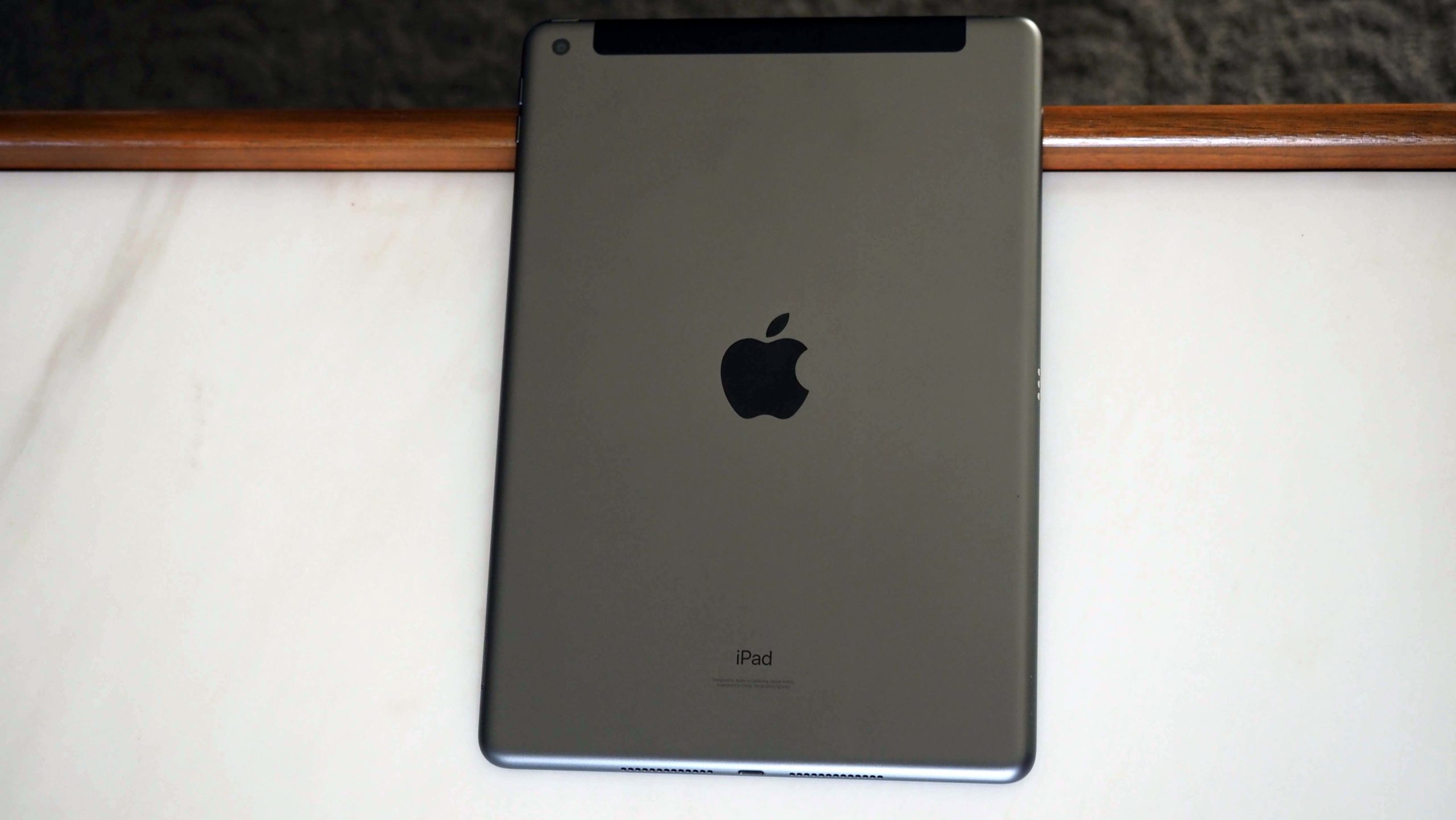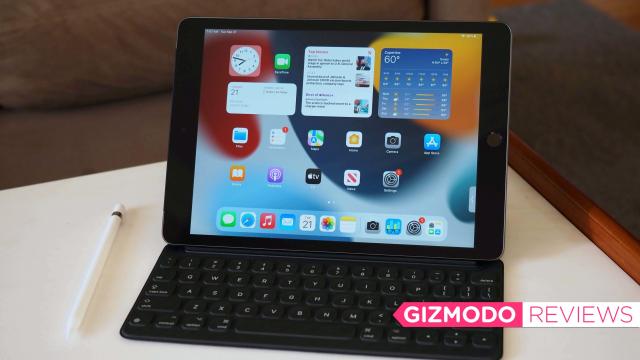Apple’s cheapest iPad is the iPhone SE of tablets. On the surface, there are no bells or whistles. It has chunky bezels, a physical home button with Touch ID, and a design that calls to mind mid-2010s iPhones. It is, safe to say, boring. And people still love it.
Every year the cheapest iPad gets a little bit better, and every year it stays $US329 ($455). What you get for that price may not be the coolest iPad, a laptop replacement with a blazing fast chip that lets you upload and edit 4K footage, or whatever pros are buying Pros for. But you do get a capable iPad that’s good for reading books, watching TV, falling down Reddit rabbit holes, sending off emails, and whatever else you need a handy little tablet for.

Apple iPad (9th-gen)
What is it?
Apple's newest cheap iPad
Price
$US329 ($455)
Like
Solid performance and battery life, True Tone display, hugely upgraded front-facing camera, iPadOS 15 improvements, the price
Don't Like
Design is getting a little long in the tooth
What’s New
The new cheap iPad has several new upgrades over last year’s cheap iPad. It has a slightly newer processor, the A13 Bionic (which is two generations behind the A15 Bionic found in the 2021 iPad Mini). Its 10.2-inch display now supports True Tone, so it adapts to ambient light for a more comfortable reading experience. It has a new 12-megapixel ultra-wide-angle front-facing camera that supports Centre Stage, a neat feature for video calls that allows you to move around while the 122-degree field-of-view camera refocuses to keep you in frame. The new iPad Pro has the exact same lens with the exact same feature, and it works just as well on the cheap iPad.
The ninth-gen iPad comes with double the base storage as its predecessor, so now you get 64GB instead of a measly 32GB for the starting price of $US329 ($455). And while all those features are great, the cherry on top is the tweaks that come in iPadOS 15, which make multitasking and note-taking a little more seamless across all the latest iPads, regardless of price.

What hasn’t changed: basically everything else. The cheap iPad still has a Smart Connector for connecting accessories like my nemesis, Apple’s Smart Keyboard, which I used while reviewing this iPad. (The Smart Keyboard does a fine job at propping up the iPad, but does nothing to protect its back and sucks to type on. There are plenty of third-party keyboard options to choose from, though.) The cheap iPad also works with Apple’s first-gen Apple Pencil, which charges via the iPad’s Lightning port — no USB-C here, folks — and is still prone to being lost because there’s no slot or magnet to wrangle the stylus. The screen is mostly the same (minus the addition of True Tone), Touch ID remains the same, and, for those who still prioritise a headphone jack over everything else, yes, the iPad has retained that, too.
Pro-Level Video Calls
One of the biggest upgrades on the ninth-gen iPad over last year’s model is the front-facing camera, which has been jacked up from a 1.2-MP lens to a 12-MP one. The difference is huge. Huge! I no longer look like a grainy, 2004-era me when I make video calls on the new iPad, and the Neural Engine-powered Centre Stage feature makes it so I can move around while chatting (perfect for calls while cooking). The cheap iPad’s 8-core Neural Engine is, of course, not quite at the level of the Pro’s 16-core one, and the the A13 Bionic is no M1. Anecdotally it seemed like Centre Stage was not quite as fast at following me as I moved around a FaceTime call on the cheap iPad compared to the Pro, but it was still quite good.
However, I’ve said it before and I’ll say it again: Apple’s insistence on sticking the front-facing lens to the left side of the screen when you’re using the iPad in landscape mode is distressing, and a wider field-of-view that can refocus to keep you in frame does nothing to fix how weird it is. If you don’t use a keyboard or stand to keep the iPad placed horizontally and you hold your iPad like a phone to make video calls, then this won’t be an issue. I’m sure there are those of you out there. I don’t understand it, but I respect it.
Fine Performance, Great Battery Life
I expected the iPad’s battery life to remain reliably solid — last year’s iPad clocked in at 9 hours and 30 minutes, which is plenty respectable. But between iPadOS 15 and the A13 Bionic, the new cheap iPad actually lasted an hour and change longer than the old one in Gizmodo’s video-streaming battery rundown test, clocking in at 10 hours and 42 minutes. It also lasted a smidge longer than the fourth-gen iPad Air (10:30) and a lot longer than this year’s 12.9-inch iPad Pro (9:02). If battery life is your top priority in a tablet, the cheap iPad is a worthy contender.
The A13 Bionic turns in capable performance, too, easily switching between apps and handling multitasking with ease. On synthetic benchmarks, the new iPad substantially outperformed Samsung’s latest mid-range tablet, the Galaxy Tab S7 FE, which is substantially more expensive at $US529 ($731). The iPad notched a 3373 multi-core and 1334 single-core score on Geekbench 5, a measurement of overall system performance, compared to the Tab S7 FE’s 1801 multi-core and 651 single-core scores. Of course, the A14 Bionic iPad Air 4 and M1 iPad Pro blow the cheap iPad out of the water, but you absolutely get what you pay for, and it’s totally fine.
Is the Cheap iPad Worth Buying?

If you’re using an old fifth- or sixth-gen iPad, the latest version is a solid upgrade, despite the fact that it looks almost exactly the same as those models. A better processor offers solid performance, an upgraded camera makes you look better on video calls (despite the awful lens placement) and dependably good battery life and True Tone make it so you can spend hours comfortably scrolling away in bed.
And the price just can’t be beat. This is the tablet I would buy (and have bought, in the past) for my nieces and nephews or my mum — anyone who needs a decently-sized screen and support for all the good apps but doesn’t need the power of an iPad Pro, or even an iPad Air for that matter. Apple has complicated the iPad upgrade decision this year with the sixth-gen iPad Mini, which is basically a pint-sized Air with a speedier chip, and while it’s an amazing device, it’s also much smaller than the cheap iPad — and at $US499 ($689), is not quite as affordable.
Not everybody wants the latest and greatest technology. The new cheap iPad is a dated package, to be sure, but you get much of the same iPad experience you get on much more expensive Apple products for far less. It’s boring, but it works, and it’s good.
